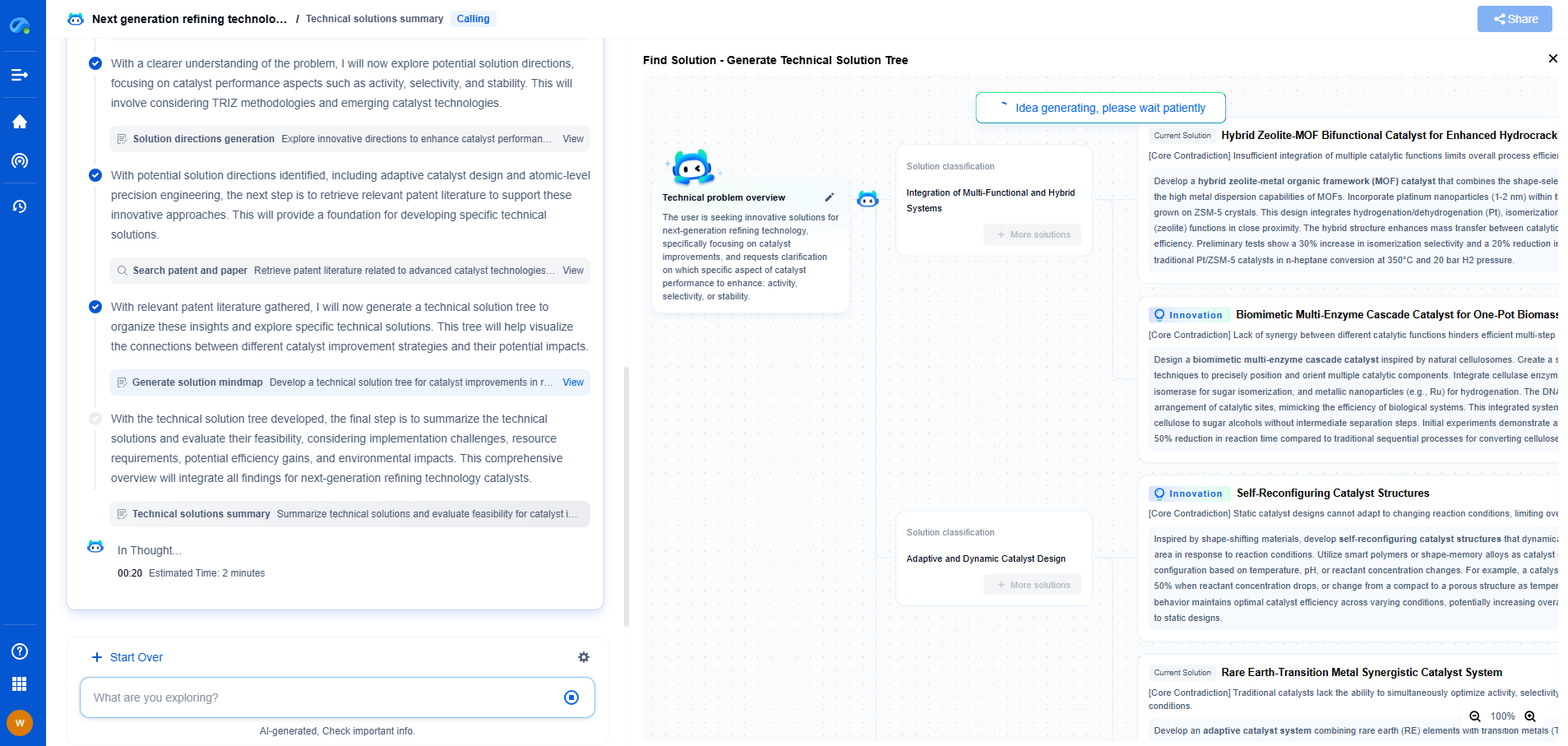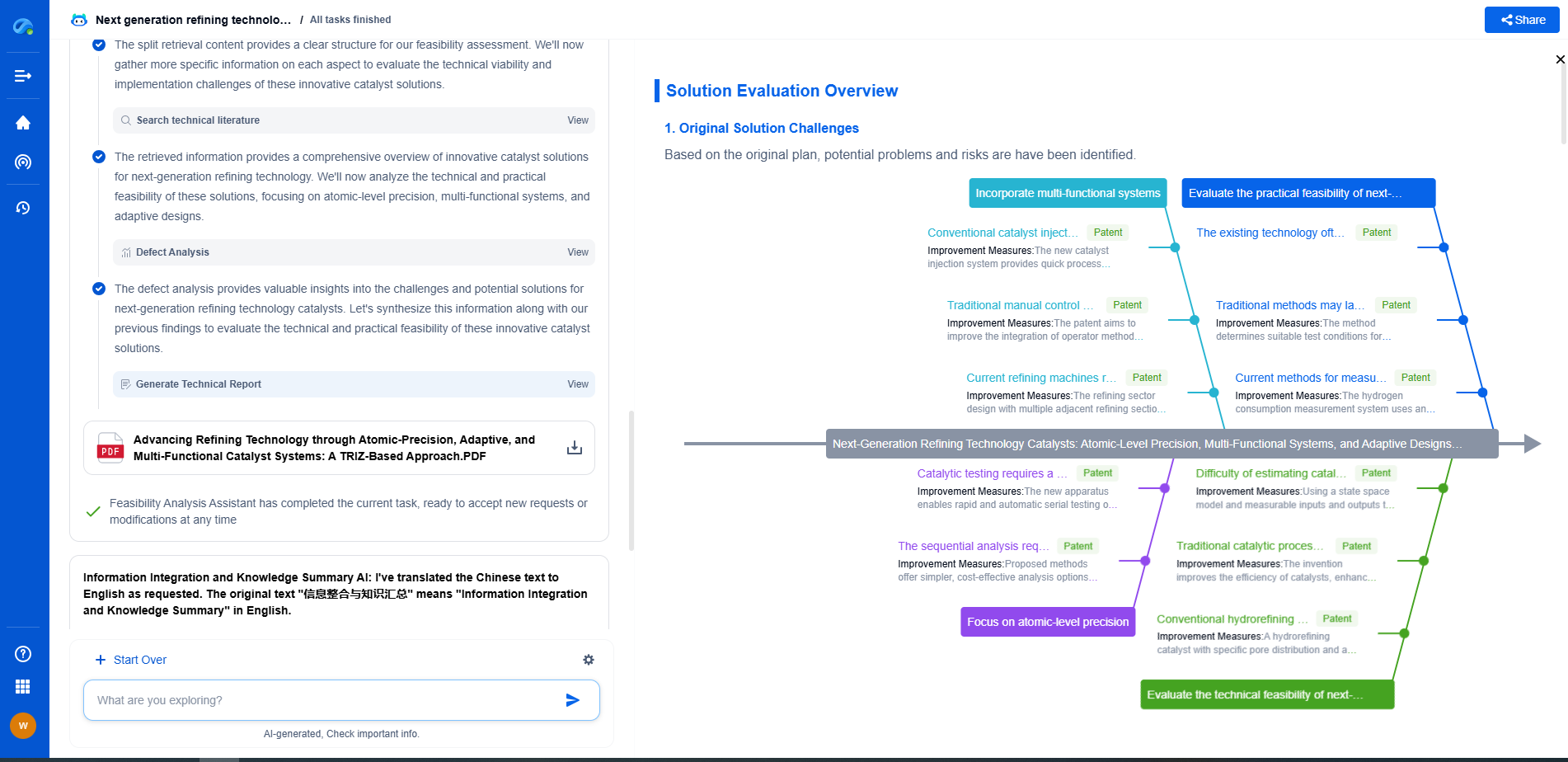The Role of Non-Destructive Testing (NDT) in Blade Manufacturing
JUN 26, 2025 |
In the world of blade manufacturing, whether for turbines, aircraft, or other high-performance applications, maintaining integrity and performance is crucial. Non-destructive testing (NDT) plays a pivotal role in ensuring these blades meet stringent quality and safety standards without compromising their structural integrity. This article delves into the importance of NDT in blade manufacturing, exploring various methods and their applications.
Ensuring Structural Integrity
Blades operate under extreme conditions, facing high stress, pressure, and temperature differentials. Any flaws or defects can lead to catastrophic failures, posing significant safety risks and economic losses. NDT techniques allow manufacturers to detect potential issues like cracks, voids, or inclusions early in the production process and throughout the lifecycle of the blades. By identifying these problems without causing damage, manufacturers can take corrective measures to enhance the durability and reliability of their products.
Common NDT Techniques in Blade Manufacturing
1. Ultrasonic Testing
Ultrasonic testing is widely used in blade manufacturing due to its ability to detect internal defects. High-frequency sound waves are transmitted into the blade material, and the reflected signals are analyzed to identify irregularities. This method is particularly effective for assessing the thickness and detecting cracks or inclusions within composite and metallic blades.
2. Radiographic Testing
Radiographic testing involves using X-rays or gamma rays to create images of the internal structure of blades. This technique is excellent for identifying surface and sub-surface defects. It provides a comprehensive view of the blade's internal features, making it invaluable in industries where precision is paramount, such as aerospace.
3. Eddy Current Testing
Eddy current testing is employed to detect surface and near-surface defects in blade materials, especially those made of conductive materials like metals. By inducing electromagnetic fields and measuring the resulting currents, this method can accurately locate cracks, corrosion, or other discontinuities.
4. Thermographic Testing
Thermographic testing uses infrared cameras to detect temperature variations on the blade surface, which can indicate underlying defects. This technique is useful for inspecting large surface areas quickly and identifying issues such as delaminations or bonding failures in composite blades.
5. Visual Inspection
Though less sophisticated than other NDT methods, visual inspection remains a fundamental part of blade assessment. It involves examining the blade's surface for visible defects, such as dents or scratches, and serves as a complementary technique alongside more advanced methods.
Benefits of Implementing NDT in Blade Manufacturing
Non-destructive testing offers several key benefits in blade manufacturing. Firstly, it enhances safety by ensuring that only blades meeting the highest quality standards are deployed. This reduces the risk of accidents and failures in the field. Secondly, NDT helps in cost reduction by identifying defects early, thus minimizing repairs and rework. Moreover, it contributes to extending the lifespan of blades by facilitating regular maintenance and condition monitoring.
Challenges and Future Directions
While NDT provides numerous advantages, its implementation is not without challenges. The high cost of advanced equipment and the need for skilled personnel to interpret results can be barriers for some manufacturers. Additionally, as blade designs become increasingly complex, developing new NDT techniques to address these challenges is essential.
Looking ahead, advancements in digital technologies, such as artificial intelligence and machine learning, are poised to revolutionize the field of NDT. These innovations promise to enhance defect detection capabilities, automate inspections, and provide real-time data analysis, further improving the quality and reliability of blades.
Conclusion
Non-destructive testing is an indispensable component of blade manufacturing, ensuring that products meet rigorous standards for safety and performance. By employing a range of NDT techniques, manufacturers can effectively detect and address defects, ultimately enhancing the integrity and longevity of their blades. As technology evolves, NDT will continue to play a critical role in advancing the field of blade manufacturing, driving improvements in both process and product quality.
Empower Your Wind Power Innovation with AI
In the fast-evolving landscape of wind turbine technology—where aerodynamic optimization, generator efficiency, and structural innovation are critical—staying ahead requires more than just expertise. It requires intelligent tools that accelerate R&D and protect your competitive edge.
Patsnap Eureka is your AI-powered research assistant, designed specifically for innovators like you working at the forefront of Wind Motors. Whether you're analyzing blade design trends, exploring novel gearbox architectures, or navigating complex global patent landscapes, Eureka streamlines the entire process with precision and speed.
👉 Experience how Patsnap Eureka can revolutionize your R&D and IP strategy. Request a demo today and power up your next breakthrough.
- R&D
- Intellectual Property
- Life Sciences
- Materials
- Tech Scout
- Unparalleled Data Quality
- Higher Quality Content
- 60% Fewer Hallucinations
Browse by: Latest US Patents, China's latest patents, Technical Efficacy Thesaurus, Application Domain, Technology Topic, Popular Technical Reports.
© 2025 PatSnap. All rights reserved.Legal|Privacy policy|Modern Slavery Act Transparency Statement|Sitemap|About US| Contact US: help@patsnap.com

